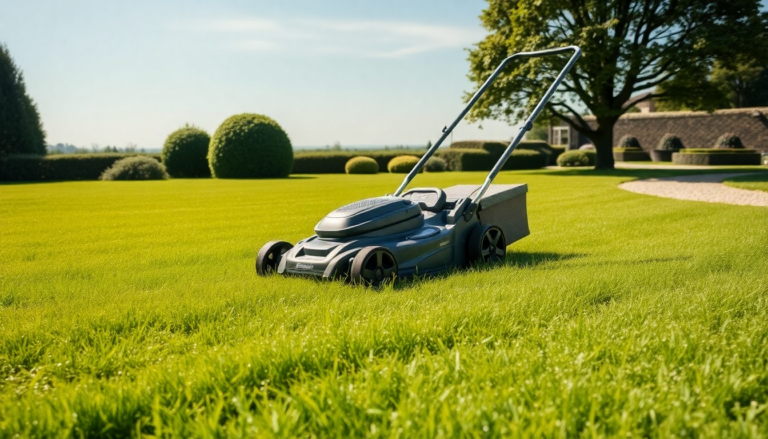Argomenti trattati
Why Mowing Matters
Firing up the lawn mower is more than just a Saturday chore; it’s a vital step in maintaining a healthy outdoor space. The satisfying scent of freshly cut grass is a hallmark of spring and summer, but without proper mowing techniques, your lawn could suffer more than thrive. Understanding the significance of proper mowing practices can transform your yard from mediocre to magnificent.
Understanding Grass Health
Your lawn isn’t just a patch of grass; it’s a living ecosystem that requires care and attention. Cutting grass too short might seem like a good idea for a manicured look, but this can actually harm your lawn. Grass, like any other plant, relies on photosynthesis to thrive. By scalping your lawn, you stress the plants, leading to sparse growth and making it easier for weeds to invade.
Quick Fix: Always aim to remove no more than one-third of the grass’s total leaf area when mowing. If you’re unsure about the type of grass in your yard, reach out to your local agricultural extension service for identification and advice on the ideal mowing height.
Mower Maintenance: The Key to a Healthy Lawn
A well-maintained mower is essential for achieving clean cuts. Dull mower blades can tear grass rather than cut it cleanly, resulting in a jagged appearance and increased vulnerability to pests and diseases. Regular maintenance not only enhances the look of your lawn but also promotes its overall health.
Quick Fix: Have your mower blades sharpened at least once per season. This simple action can drastically improve the quality of your cuts and, consequently, the health of your lawn.
Mowing Schedule: Don’t Overdo It
While it’s tempting to stick to a strict mowing schedule, it’s more beneficial to mow based on the grass’s growth rather than the calendar. For instance, cool-season grasses may need mowing every four to five days in spring, but in summer, you might find that every couple of weeks is sufficient.
Quick Fix: Focus on mowing when the grass reaches the optimal height for its species instead of adhering to a rigid schedule.
Timing is Everything
Mowing wet grass may seem like a convenient option, especially after a rainstorm or watering. However, this practice can lead to soil compaction and uneven cuts. Wet grass clumps together, potentially clogging your mower and creating a mess.
Quick Fix: Whenever possible, allow your lawn to dry out before cutting it. This will ensure a cleaner cut and a healthier lawn.
Varying Your Mowing Pattern
Have you noticed strange patterns forming in your lawn? Consistently mowing in the same direction can lead to uneven growth and sparse areas, providing a perfect breeding ground for weeds. To combat this, it’s essential to mix up your mowing pattern regularly.
Quick Fix: Change your mowing direction each time you mow. This simple adjustment can prevent uneven growth and promote a thicker lawn.
Managing Grass Clippings
The job isn’t complete after mowing. Leaving large clumps of grass clippings can suffocate the grass beneath and expose it to diseases. Plus, it creates an unkempt look that can be tracked indoors.
Quick Fix: If clumps form, allow them to dry and then rake or blow them away. Alternatively, using a mulching mower can re-cut clippings into tiny pieces, allowing them to decompose and provide essential nutrients for your lawn.
By following these expert tips, you can ensure that your lawn looks its best and thrives throughout the season. A little attention to detail in your mowing routine can go a long way in achieving that lush, green yard you’ve always wanted.

